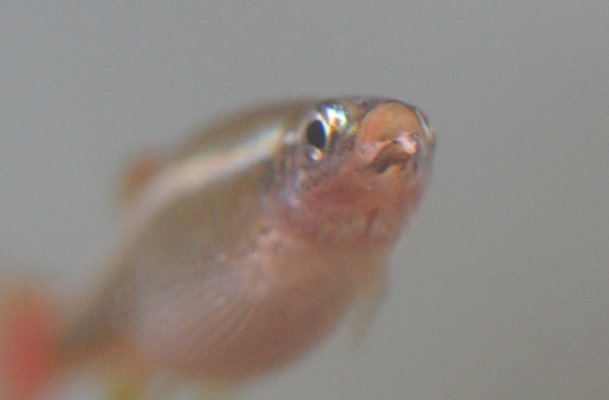I'm against broad spectrum medications as I've messed about before with medicines, not knowing what I'm treating, and regretted it. I do not like messing with medicines, and I will not just dose the tank in the hopes it will solve whatever problem I have.
As for the water changes greatly reducing larval parasites, that isn't enough. Greatly reducing them isn't completely eliminating them, and again nobody has suggested any parasite that would make a fish exhibit the symptoms the female Minnow has shown, so it's an assumption that I'm dealing with parasites and not an injury or something else. The 'if present' part is what gets to me - I do not like assumptions. I have panicked myself in the past, I have an obsessive compulsive personality, and I am resolved not to rush into things or to be alarmist. I keep making myself ill when I worry about the fish. It's both for my own health and to avoid making mistakes for the sake of the fish. If I get the medicine wrong - or don't have the medicine at all - those water changes are completely nullified. Maybe they are considered a sensible precaution, and they might put off the inevitable, but at present, that isn't the best thing - in just a few weeks, my hands will be tied and I'll be too busy to do anything with the tank for at least a two week period, and I can't rely on my family members to help resolve the situation. This is a really bad time for anything to be happening, so if I delay it, it could be even worse. If I get the medicine wrong, that's even more messing about; I had that before Christmas, when I was paranoid and suspected a potential nematode infestation with the Clown Loach - prepared the tank for the treatment, only to find the veterinary clinic had sent a drip bottle instead...delayed by a further week, and had to redo the preparatory water changes (they weren't as large as I do now, but you can imagine my frustration). I also can't keep going through 50% water changes multiple times a week, week after week, until I find out what it is - it just isn't a solution.
I have learnt from past experience to treat the fish for what I know they have, and at present, I have no idea what they have. This isn't to say I don't appreciate the input on this thread, but everyone has their own approach to this kind of situation, informed by previous experience. I'm currently consulting with another person who aided me in finding a new home for the Clown Loach, as they have helped to rescue fish and nurse them back to health. I'm considering that rehoming with them into a dedicated quarantine tank for further observation is the best chance these fish have with all I have going on at the moment.
Does anyone have suggestions to the type of parasite that might cause such symptoms as white spots/cysts that erupt shortly after appearing, within ~12 or so hours? Ich and velvet do not fit. If it's a parasite, someone has to have a suggestion - it seems like such an obvious symptom to aid in identifying it. If nobody can suggest a type of parasite to aim for treating, I'm not satisfied with that diagnosis. I have looked it up on the internet, and some of the more common parasites don't appear to spread in the manner of white cysts/spots erupting (except for Ich and Velvet, which this definitely isn't either of).
There has been no flashing, and the white spot/bump came from a raised area/lump, which might suggest a possible injury. But, as she hangs at the surface - while the light is turned off, that is - something has affected her gills, or at least I'm presuming that's why she hangs at the surface. Since the lump was so close to her right gills, that may be contributing to the symptoms. Another potential symptom - distended abdomen. Not bloating outwards, but possibly downwards (distension). Nematode?
Come to think of it, the only route parasites would have to my tank is through plants and the snails that were recently introduced. It looks like one snail remains, I'm eliminating that today with a 50% change as well as the weekly filter clean. However, if the snails had introduced anything, it would make more sense for further fish to have been infected by this point - the snails I eliminated last weekend had been around for at least a week as their only introduction could be from new plants (the original snail had no mate, and cleary wasn't carrying any eggs itself), so if they introduced anything, I'd think there's been sufficient time for it to infect at least one fish. Why not further fish? Why did it take so long for it to infect just one fish? Which snails did this, as I'd also had a pond/bladder snail in my tank for at least a month prior to eliminating him last weekend? The male Minnow clearly doesn't have the same issue as the female Minnow, either (possibly a tumour in this case, then). Would all this make it a parasite that requires an intermediate host?

